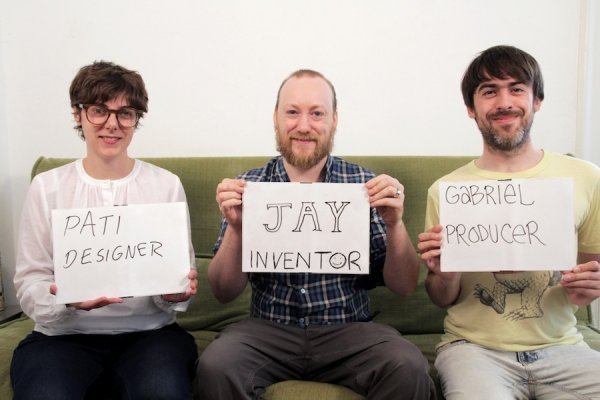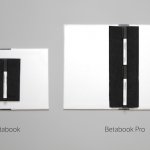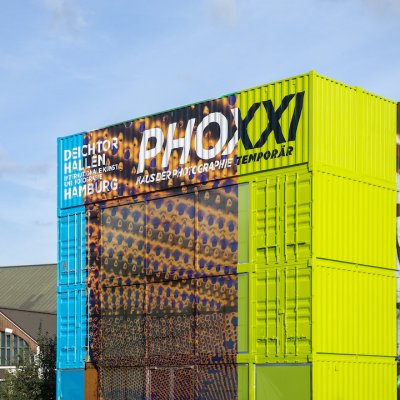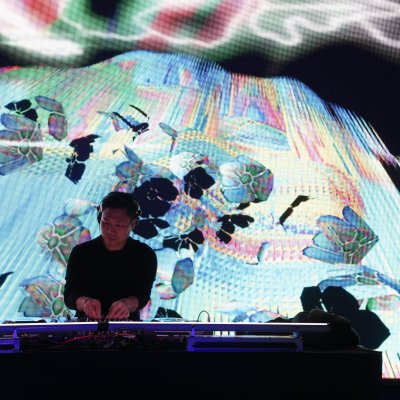Betabook is a new, portable, reusable whiteboard tablet in the form of a book in which notes can be made with a marker pen and erased with a cloth.
On one hand eschewing digitization while encouraging integration of sorts (suggested use includes taking photos of notes with your smartphone, and their promotional video wryly uses digital jargon to describe the product), it saves paper waste but still exists in the physical realm.It’s both modern, but somehow old-fashioned, pragmatic yet — as you will read — conceptually driven. The brainchild of inventor Jay Cousins, his partnership with experimental storytelling studio KS12 members Gabriel Shalom and Patrizia Kommerell has solidified into a Kickstarter campaign that, at time of writing, had already exceeded it’s goal by 40 percent in only a quarter of its fundraising period. We had a brief chat with the three of them to find out more.
Your last project was Orikaso [portable, foldable, polypropylene plates, bowls and cups], yes?
JAY: The last product-based project. I‘ve done a lot of other things in between: co-founded Open Design City, Chaordinated Self Organized Events and helped catalyze maker communities in Egypt. But this is my first return to the world of product design.
How has this process of product design differed from Orikaso
JAY: Orikaso was exclusively me designing in my bedroom, all done in secret, this has been far more collaborative; the first prototype was born in five minutes, but it took numerous iterations in the wild to reach a finished product. The first prototypes I just used publicly, and would make a new one based on feedback. Then, after KS12 got their hands on a prototype, they began to find new materials and make the product more professional.
GABRIEL: I watched Jay and Pati develop the product together through various material choices and mechanical builds.
JAY: The core difference for me is that the design process here was far more organic, more product birth and evolution than design, while Orikaso was very controlled and egoistic from a process perspective.
PATI: I was concerned with getting every aesthetic detail polished and functional. It was clear to us that there was an opportunity to create something timeless with the design.
How long was it between the initial prototype and the final prototype?
JAY: First product was born around March 12, 2012. By March 22nd, it had already got to its basic shape.
GABRIEL: Factory prototypes were received two weeks ago. So over two years of development. Slow design. We were busy with other things; Jay was in Egypt part of the time, and we took KS12 to Portland to participate in a startup incubator.
PATI: That said, the best designs take time; it’s good to have time to get perspective AND to use the product and work with it in real situations.
GABRIEL: It looks simple, but the supply chain spans multiple countries!
You all met at Betahaus, is that why it‘s called Betabook
GABRIEL: That‘s one half of the story — the other half has to do with something Jay said when we interviewed him for a video documentary we made in 2010 — also the first time we met: “Essentially, everything should be delivered in beta,” which is also the name of the video.
JAY: The Beta element is a reference to prototyping — that everything should be seen as a prototype, unfinished. As in, this is an invitation to improve on the product and to change it to better suit your needs. It also represents the use of the book itself — that nothing you create inside the book is permanent. It is a space for flow and continuous change.
So, you had this thought about the importance of Beta in 2010, and then in 2012 you made the first version of the book?
JAY: Yep, although I‘d been experimenting with different ideas in-between, this was the first prototype I produced since Orikaso that I felt the world could benefit from. But everything I built from that moment, from spaces to events, was always in perpetual Beta. The interview with Gabe helped to clarify my thoughts on this, also.
Your material for the project says, “Betabook embodies the spirit of Berlin.” In a way, does your international trio also do that [Jay is British, Gabriel is American, Pati is German]?
JAY: There is the internationality, but I think how it really embodies the spirit of Berlin is the freedom to create and collaborate. Berlin is a space in which people can gather and easily share ideas. Betabook is a smaller portable space that you gather around, rather than in. But at a microcosmic scale the freedom is there.









